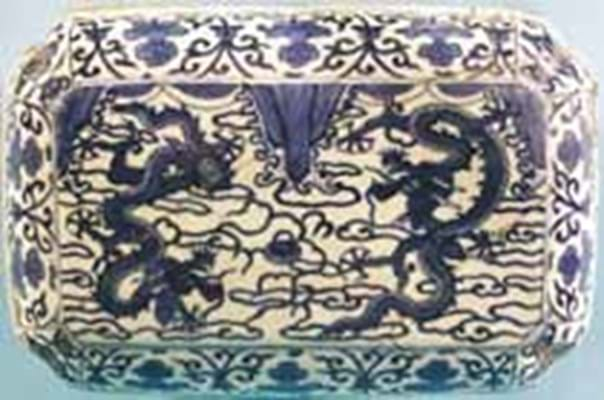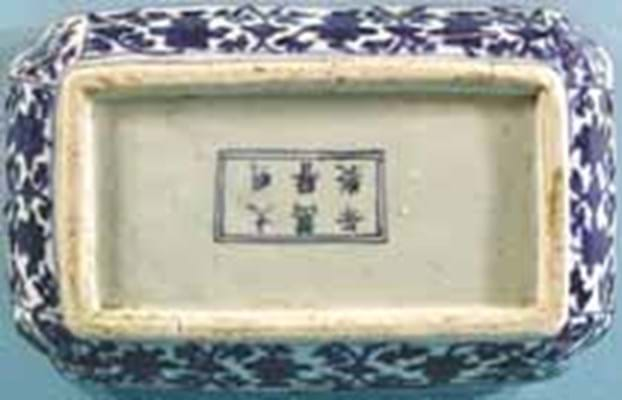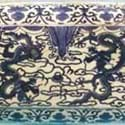From the same estate as the clock came a mahogany breakfront bookcase dating to c.1785. In country-house condition and with a good colour, it had astragal doors and four ebony strung and crossbanded cupboards. A commercial size at 7ft 11in x 7ft 6in (2.41 x 2.28m), it attracted trade and private interest before selling to a dealer at £15,000.
Halls specialist Jeremy Lamond was in no doubt that it was the colour that sold a c.1630/40 Charles I joined oak press cupboard. "It had a wonderful glow. It had one of the best colours I have seen in years," he enthused.
Consigned from a Shropshire vendor, it sold to a Cheshire collector at £6800.
The vogue for rustic furniture and the demand for Imperial Chinese ceramics both remain sufficiently strong for examples of each to bring high prices.
An example of the first was a 19th century French elm farmhouse table which, despite alterations, was taken to £2200.
As to Imperial ceramics, neither the fact that it had been badly broken and restored, deterred bidding on a 17th century blue and white dragon box and cover discovered in a maid's attic room on a probate valuation. Painted with two five-clawed dragons chasing the flaming pearl, it bore a six-character Wanli period (1573-1619) mark to the base and sold to a Midlands dealer at £4600.
Other Oriental ceramics included two Chinese blue and white Kangxi period (1662-1722) baluster vases and a Meiji Satsuma box.
The vases, painted with pine trees, deer and cranes but missing their covers were taken to £2500 by the London trade.
The rectangular Satsuma box and cover, signed by the master Kaizan, made £3400.
Overall, the sale was 78 per cent sold by lot and totalled £154,000.
Imperial China backs up timely triumph
A QUALITY furniture grouping and a small, but strong, Oriental section contributed to the upbeat performance of Halls (15% buyer's premium) 258-lot sale on July 14, the top lot of which, a £24,000 George III mahogany longcase, was illustrated on the front cover of Antiques Trade Gazette No. 1650 dated July 31 and August 7.








